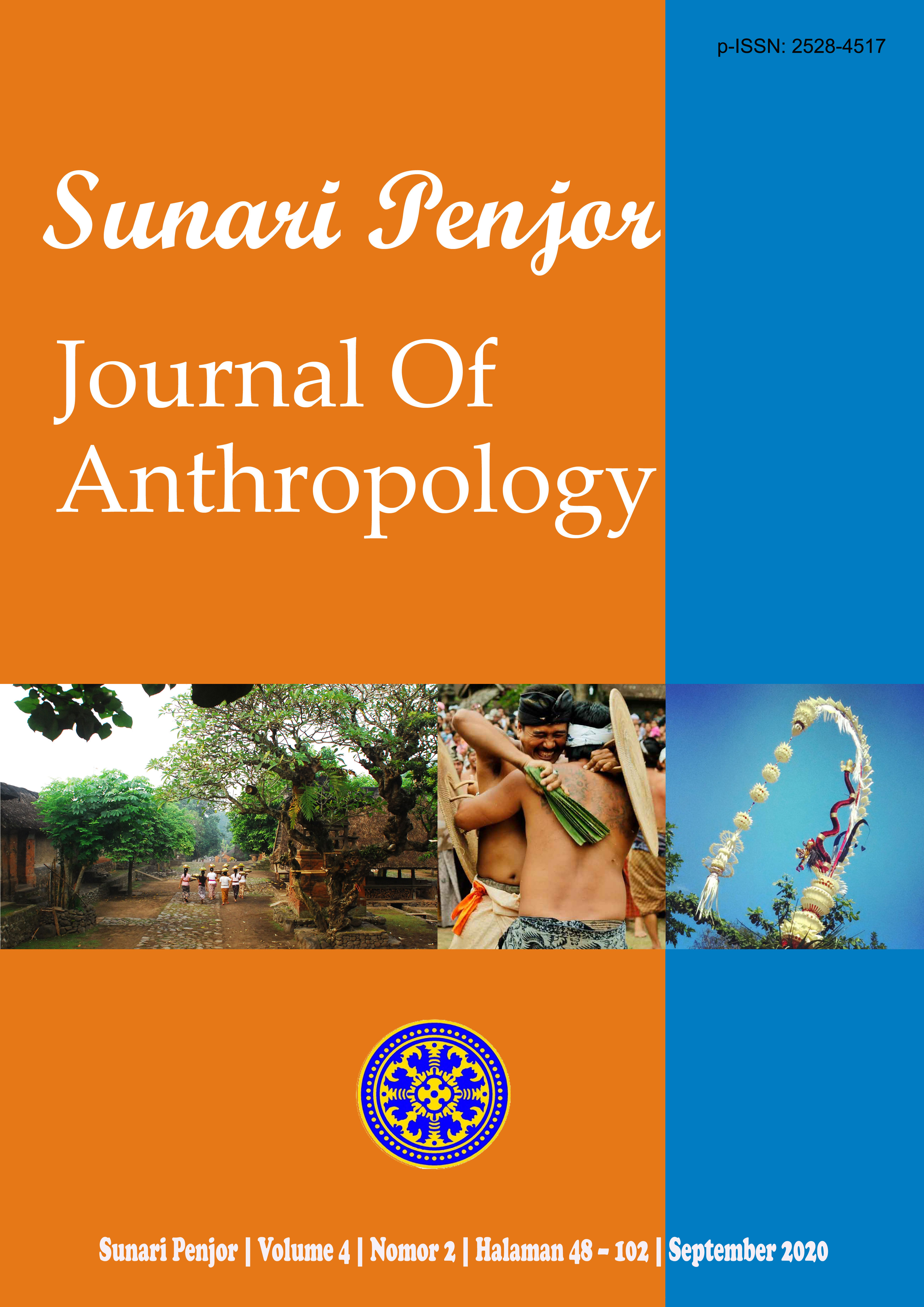Sistem Perkawinan Adat Lamaholot Dalam Perspektif Antropologi Di Desa Watodiri, Kecamatan Ile Ape, Kabupaten Lembata, Provinsi Nusa Tenggara Timur
Abstract
Marriage in general is closely related to the two foundations of community life, namelyculture and religion. Culture is a very important traditional wedding ceremony, because traditional marriage will still exist in a cultured society. The traditional marriage system of the Lamaholot ethnic group has a hereditary culture, namely the traditional marriage of belis bala. Belis bala is a sacred aspect for the Lamaholot ethnicity, where men cannot undermine a woman's dignity. This study aims to determine: (a) The perspective of the younger generation on the belis bala in the Lamaholot ethnic traditional marriage system and (b) the inculturation of the church towards the traditional Laamaholot ethnic marriage system. Supported by Marcel Mauss' theory of reciprocity in compiling this research and the research model was made with the type of qualitative research, including data collection by observation, interviews, literature study and data analysis to process research results. The results of this study indicate the perspective of the younger generation, namely, there are some of them who feel heavy belis bala and want relief, but some others consider the traditional marriage system of belis bala as a challenge for them to be able to have their idol girl. They still want to maintain this traditional belis bala marriage system. The church sees this as a tradition that must be maintained. The church follows the regulations made by the village government for the preservation of the belis bala marriage system.
Downloads
References
Boersema, Jan. Dr. 2015. Perjumpaan Injil dan Budaya dalam Kawin-Mawin. Jakarta: Yayasan Komunikasi Bina Kasih.
Pous, Hendrikus, dkk. 2018. “Implikasi Penentuan Belis dalam Adat Perkawinan Masyarakat Tunbaba di Desa Tun’noe Kecamatan Miomaffo Timur Kabupaten Timor Tengah Utara”. NTT: Jurnal Gatranusantara Volume 16 No. 2.
Deke, Elfrida Maria, dkk. 2020. “Perubahan Wujud dan Makna Belis dalam Perkawinan Adat Bajawa Boba”. NTT: Khatulistiwa Volume 9 No. 7.
Syamsuriadi, Syamsuriadi, dkk. 2018. ”Makna Tu’u Belis bagi Masyarakat Kelurahan Mokdale Kecamatan Lobalain Kabupaten Rote Ndao”. NTT: Jurnal Communio Volume 7 No. 2.
Sudirman, Dwiputri Marniati, dkk. 2020. “Pemberian Belis (Mahar) Perkawinan Pada Masyarakat Manggarai Barat di Kecamatan Komodo Ditinjau Dari Hukum Islam (Studi Kasus di Desa Gorontalo Kec. Komodo Kab. Manggarai Barat Nusa Tenggara Timur)”. NTT: Jurnal Ilmiah Hukum Keluarga Islam Volume 2 No. 1.
Koenjaraningrat. 2009. Pengantar Ilmu Antropologi. Jakarta: PT Ranika Cipta
Koentjaraningrat. 2014. Sejarah Teori Antropologi 1. Jakarta:UI Press.
Kasiram. 2008. Metodologi Penelitian Kualitatif dan Kuantitatif. Jakarta: Yayasan Obor.
Kleden, Doni. 2017. Belis dan Harga Perempuan Sumba (Perkawinan adat suku wewewa, Sumba Barat Daya, NTT).
Koentjaraningrat. 1990. Konsep-Konsep Nilai. Jakarta: PT Gramedia
Koentjaraningrat. 1997. Metode-Metode Penelitian Masyarakat. Jakarta: PT Gramedia
Koentjaraningrat. 2005. Pengantar Ilmu Antropologi. Jakarta: Yayasan Obor Indonesia
Koentjaraningrat. 2006. Pokok-pokok Antropologi Budaya. Jakarta: Yayasan Obor Indonesia
Koenjaraningrat. 2009. Pengantar Ilmu Antropologi. Jakarta: PT Ranika Cipta
Koentjaraningrat. 2014. Sejarah Teori Antropologi 1. Jakarta: UI-Press
Mauss, M. 1992. Pemberian: bentuk dan fungsi tukar-menukar di masyarakat kuno (terjemahan). Jakarta: Yayasan Obor Indonesia














